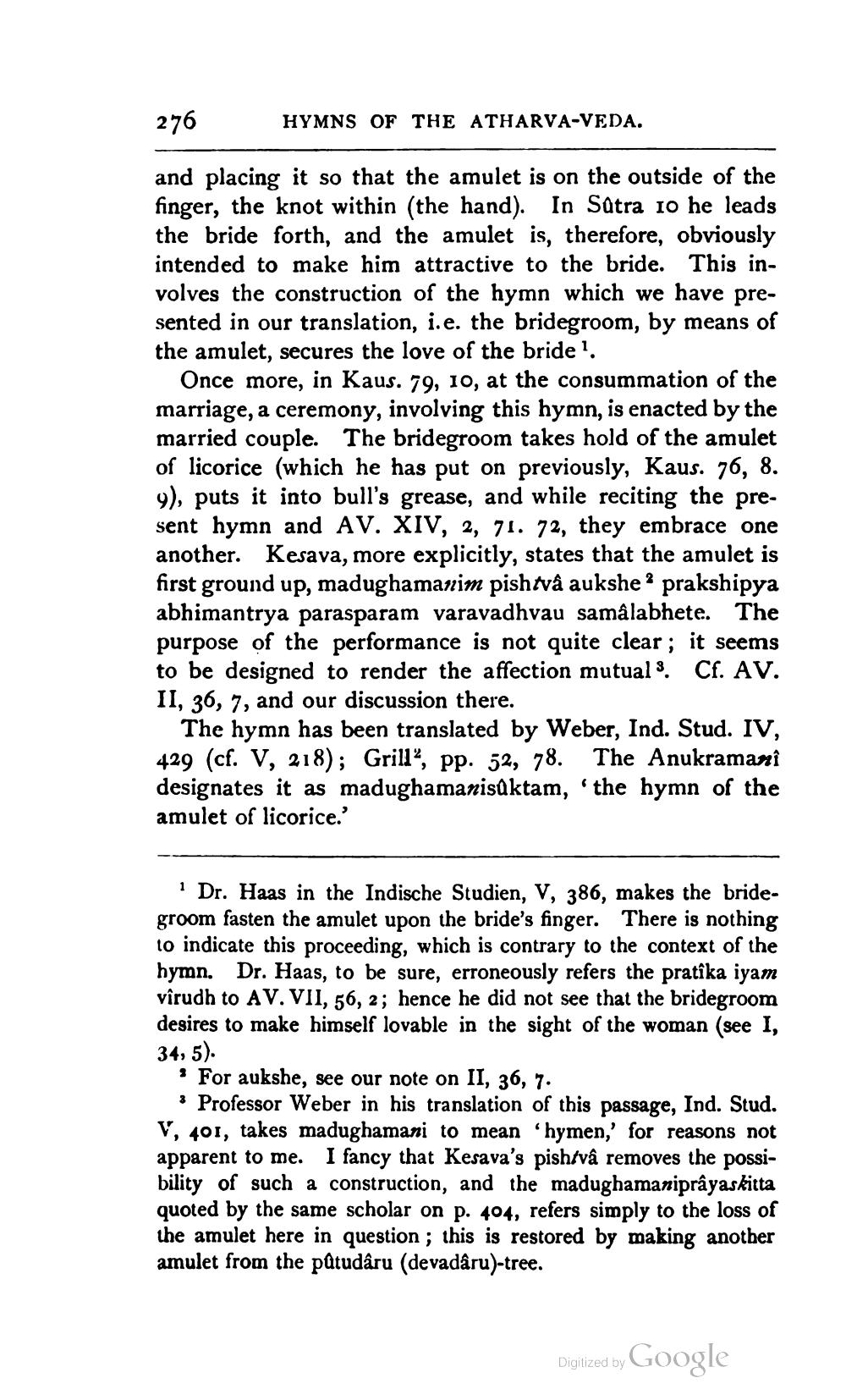________________
276
and placing it so that the amulet is on the outside of the finger, the knot within (the hand). In Sûtra 10 he leads the bride forth, and the amulet is, therefore, obviously intended to make him attractive to the bride. This involves the construction of the hymn which we have presented in our translation, i.e. the bridegroom, by means of the amulet, secures the love of the bride 1.
Once more, in Kaus. 79, 10, at the consummation of the marriage, a ceremony, involving this hymn, is enacted by the married couple. The bridegroom takes hold of the amulet of licorice (which he has put on previously, Kaus. 76, 8. 9), puts it into bull's grease, and while reciting the present hymn and AV. XIV, 2, 71. 72, they embrace one another. Kesava, more explicitly, states that the amulet is first ground up, madughamanim pishtvâ aukshe2 prakshipya abhimantrya parasparam varavadhvau samâlabhete. The purpose of the performance is not quite clear; it seems to be designed to render the affection mutual 3. Cf. AV. II, 36, 7, and our discussion there.
HYMNS OF THE ATHARVA-VEDA.
The hymn has been translated by Weber, Ind. Stud. IV, 429 (cf. V, 218); Grill", pp. 52, 78. The Anukramanî designates it as madughamanisûktam, 'the hymn of the amulet of licorice.'
1 Dr. Haas in the Indische Studien, V, 386, makes the bridegroom fasten the amulet upon the bride's finger. There is nothing to indicate this proceeding, which is contrary to the context of the hymn. Dr. Haas, to be sure, erroneously refers the pratîka iyam vîrudh to AV. VII, 56, 2; hence he did not see that the bridegroom desires to make himself lovable in the sight of the woman (see I, 34, 5).
For aukshe, see our note on II, 36, 7.
Professor Weber in his translation of this passage, Ind. Stud. V, 401, takes madughamani to mean 'hymen,' for reasons not apparent to me. I fancy that Kesava's pish/vâ removes the possibility of such a construction, and the madughamaniprâyaskitta quoted by the same scholar on p. 404, refers simply to the loss of the amulet here in question; this is restored by making another amulet from the pûtudâru (devadâru)-tree.
Digitized by
Google




